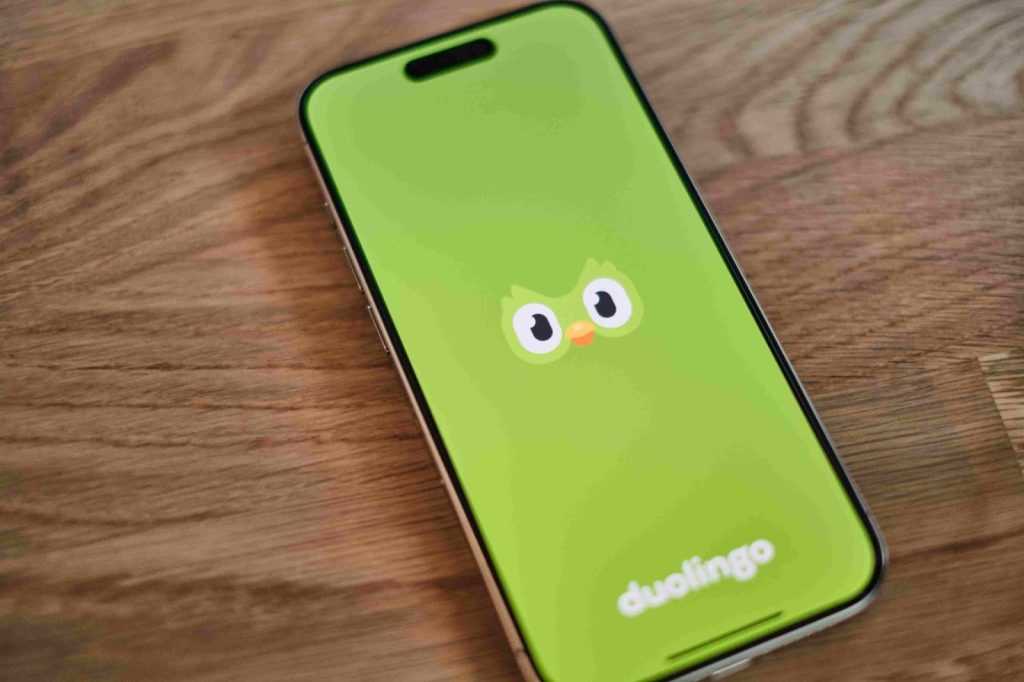When we first implemented a chatbot, I thought of it as just another support tool.
But the results quickly proved otherwise — faster resolutions, higher engagement, and a noticeable rise in customer satisfaction.
It was clear this wasn’t a passing trend but a fundamental shift in how businesses communicate and operate.
The data also backs this transformation. The current chatbot statistics show how far this technology has advanced, from automating complex workflows to delivering personalized, real-time experiences.
In this blog, I’ll share over 60 insightful statistics and trends that reveal the growing scale, performance, and influence of chatbots across industries in 2025.
What Are AI Chatbots and Why Do They Matter Today?
AI chatbots are software tools that simulate real conversations to help people get information, solve problems, or complete tasks without waiting for a human agent. You’ve probably used one while checking an order status, booking an appointment, or asking a quick question on a website.
They matter today because customer expectations have changed. People want fast answers, 24/7 support, and simple ways to get things done. At the same time, businesses are under pressure to reduce costs, improve response times, and support more customers with smaller teams.
Chatbots sit right in the middle of these needs. They handle routine questions, guide users through basic steps, and take the load off support and sales teams. This not only improves customer service but also enhances the overall experience, helping businesses operate more efficiently.
Top Chatbot Statistics & Growing Trends to Follow in 2025
If you’ve been wondering just how much AI chatbots have changed the way we interact with people and sell, the numbers might surprise you. These chatbot statistics and growing trends offer a real snapshot of what’s driving innovation, efficiency, and better customer engagement this year.
I. Statistics on Customer Preference for Chatbot
Our first category for chatbot stats focuses on understanding customers’ increasing use of chatbots. We’ve also covered why customers prefer using chatbots in the first place and how frequently they prefer to engage with businesses via this technology.
1. 67% of millennials in the US reported that they would likely purchase products and services from brands with chatbots. (Source: SlickText)
2. 1 in 5 consumers would potentially buy goods and services from chatbots. (Source: SlickText)
3. 67% of users prefer chatbots because they provide quick answers to simple questions. (Source: Dashly)
4. 47% of users are open to buying items through a chatbot. (Source: The MTM agency)
5. 87.2% of users report neutral or positive experiences interacting with chatbots. (Source: Blogging Wizard)
6. 62% of consumers prefer using a chatbot over waiting for a human agent. (Source: fullview)
7. 96% of shoppers believe companies using chatbots are taking good care of their customers. (Source: Big Sur AI)
8. 73% of buyers expect websites to offer chatbots for easy interactions. (Source: Master of Code)
Takeaway: We can clearly see that the adoption and use of chatbots is only going to increase going forward. It gives us a broad picture of how customers are willing to use chatbot as it helps them get instant answers and responses.
II. Statistics on Customer Usage & Engagement with Chatbot
Chatbot usage is on the rise, with most customers valuing 24/7 access and quick responses. These chatbot usage statistics reveal just how central chatbots have become in customer support and where human agents still matter most.
9. 49% of CX leaders agree chatbots should always escalate to a human agent if needed. (Source: CMSWire)
10. 64% of users consider 24/7 chatbot availability as the best feature. (Source: Fullview)
11. 42% more chatbot usage recorded in holiday shopping, aiding in customer interactions and transactions (Source: Reuters)
12. 75% of businesses using chatbots report increased customer satisfaction. (Source: ControlHippo
13. 88% of consumers report having at least one conversation with a chatbot. (Source: Exploding Topics)
14. 40% of millennials report daily engagement with chatbots or digital assistants. (Source: Sci-tech Today)
15. 39% of B2C conversations are handled by chatbots in some organizations.(Source: Route Mobile)
Takeaway: Chatbots boost both engagement and satisfaction, but customers still want the option of human help when needed. The best results come from blending efficient chatbot support with seamless access to real agents.
III. Chatbot Stats Defining Multiple Challenges
Chatbots deliver efficiency but still face major hurdles. Many users find them impersonal or untrustworthy, especially when data privacy or empathy is lacking. These AI chatbot statistics reveal where chatbot performance falls short and why businesses must focus on bridging the gap between automation and authentic human interaction.
16. 72% believe AI can spread misinformation if not properly managed, raising trust concerns. (Source: Fullview)
17. 27% of users lack understanding of how chatbots handle their data. (Source: Cornell University)
18. One bad chatbot experience drives away 30% of customers. (Source: Forbes)
19. 65% of customers expect seamless escalation from chatbot to human agent when needed. (Source: Adam Connell)
20. 74% of internet users prefer chatbots for simple queries rather than waiting for human agents. (Source: Master of Code)
21. 71% of users feel chatbot conversations are impersonal or lacking empathy. (Source: CX Today)
Takeaway: The data highlights trust gaps, limited empathy, and poor human handoffs as key barriers. To overcome these, businesses must ensure transparency, personalized conversation flows, and seamless agent support. The future of chatbots depends on balancing automation speed with genuine, human-like understanding.
IV. Statistics on Benefits of Using a Chatbot
When the above-mentioned challenges occur, you are bound to doubt the credibility of a chatbot. This section aims to explore statistics that can help you understand what benefits it brings to the table in the long run.
22. 38% of consumers are more likely to make a purchase when chatbot or live chat options are available. (Source: Sixth City Marketing)
23. By 2027, AI chatbots will handle over 90% of queries, without human intervention. (Source: ControlHippo)
24. 64% of businesses say chatbots help them deliver more personalized customer experiences. (Source: ControlHippo)
25. Customer service costs drop by up to 30% when chatbots handle repetitive inquiries. (Source: ControlHippo)
26. 87.6% satisfaction rate is recorded for bot-only conversations, proving growing user comfort. (Source: EcommerceBonsai)
27. 36% of businesses use a chatbot to generate more leads. (Source: Outgrow)
28. 34% of executives say that chatbots save time and allow them to focus on deep thinking and creating. (Source: Invesp)
Takeaway: A business can enjoy multiple benefits when using a chatbot for their support process. They can answer questions faster, reduce support costs and even identify more opportunities to boost sales.
V. Statistics on Chatbot’s Impact on Customer Service
Chatbots are transforming customer service by delivering instant responses, reducing workload, and improving satisfaction. Whether it’s resolving emergencies or handling FAQs, they’ve made support faster and smarter. From boosting sales to increasing customer satisfaction, these chatbot statistics clearly show why businesses are embracing AI-powered assistance like never before.
29. 37% of people use a customer service bot to get a quick answer in an emergency. (Source: SmallBizGenius)
30. 40% of customers do not care if they are receiving support from a chatbot or a human as long as they receive the much-needed support. (Source: SmallBizGenius.net)
31. 67% of businesses report an increase in sales after deploying chatbots in customer-facing roles. (Source: Software Oasis)
32. 53% of organizations plan to deploy chatbots within 18 months. (Source: Sixth City Marketing
33. 80% of people say their chatbot interactions were “generally positive.” (Source: Exploding Topics)
34. 90% of businesses report faster complaint resolution with chatbots. (Source: Amra and Elma)
35. Chatbots can manage 30% of live chat communications and 80% of routine tasks. (Source: Master of Code)
Takeaway: The data proves that chatbots are no longer just support tools — they’re strategic assets. By automating repetitive tasks and offering 24/7 availability, they let agents focus on complex issues. With rising satisfaction and efficiency, it’s no surprise most businesses are integrating chatbots to ensure every customer gets timely support.
VI. Chatbot Statistics on its Contribution to eCommerce Businesses
We see that a lot of eCommerce websites have started using a chatbot on their website. They show product recommendations, inform about upcoming sales, update customers on order status, and much more. Let’s take a look at some stats that give a better picture of chatbot and its impact on the eCommerce industry.
36. By 2025, around 80% of eCommerce businesses are expected to deploy chatbots. (Source: Daily Herald Business)
37. In eCommerce, 39% of all customer-business chats are managed by chatbots. (Source: Sixth City Marketing)
38. Some industries see chatbot conversion rates up to 70% in eCommerce contexts. (Source: LocaliQ)
39. 67% increase in sales is reported by businesses using chatbots for eCommerce. (Source: LocaliQ+1)
40. 64% of businesses believe chatbots allow them to deliver more customized support experiences to eCommerce customers. (Source: LocaliQ+1)
41. Approximately 40% of people of all ages prefer to use chatbots when shopping online. (Source: SmallBizGenius.net)
Takeaway: We clearly get to see that chatbots are helping eCommerce companies to improve their sales. Customers are inclined towards chatbots and are open to making a purchase from them as well.
VII. Chatbot Statistics Proving Impact on Social Media & Messaging Apps
It is a quick section that helps us understand that chatbots are increasingly becoming a part of social media platforms like Messenger. This has helped companies offer instant support to their customers approaching for support via this platform.
42. Over 300,000 bots are on Messenger, making it one of the primary platforms for conversational commerce. (Source: Ecommerce Bonsai)
43. Over 1.4 billion people globally use messaging apps that support chatbot access. (Source: Master of Code)
44. 54% of consumers say they’re likely to interact with AI assistants or chatbots via messaging apps. (Source: Master of Code)
45. 65% of users engage with chatbots via messaging apps either daily or weekly. (Source: Master of Code)
46. Over 1.4 billion people globally use messaging apps that support chatbot access. (Source: Master of Code)
47. 79% of chatbot engagements occur on Facebook Messenger compared to other messenger platforms. (Source: Sixth City Marketing)
48. Using engagement-oriented training, chatbots have improved conversation length (mean turns) by up to 70%. (Source: arXiv)
49. 63% of consumers believe businesses should be on Messenger. (Source: Damteq)
Takeaway: The fact that we see more than 300,000 chatbots on Messenger indicates that businesses rely heavily on them to answer multiple questions coming their way. What’s more, it helps businesses save time, effort, and money that goes into answering multiple chats coming from different customers.
VIII. Chatbot Statistics in Various Industries
What started as a tech experiment has now become a business essential. Chatbots are transforming how industries like retail, banking, and healthcare operate. They’re automating customer support, improving accessibility, and cutting operational costs. These chatbot statistics across industries reveal how AI adoption differs depending on each sector’s priorities and customer needs.
50. About 43% of banking customers now prefer resolving issues via chatbot rather than calling support. (Source: Big Sur AI)
51. Retail accounts for roughly 30% of chatbot market revenue, with bots widely used as virtual shopping assistants. (Source: Thunderbit)
52. Over 68% of healthcare organizations are incorporating AI/chatbots into their operations. (Source: Thunderbit)
53. In retail, 40% of companies use chatbots for assistance, while in healthcare usage is around 22% for patient engagement tasks. (Source: Electro IQ)
54. The acceptance rate of chatbots is 34% in online retail, 27% in healthcare, and lower in sectors like banking and insurance (~20% or less). (Source: 99Firms.com)
Takeaway: The numbers show that chatbots are here to stay, but their success depends on purpose-driven use. Retail thrives on engagement, healthcare focuses on patient access, and banking emphasizes convenience. As adoption grows, the most effective strategies will blend automation with empathy to create meaningful, efficient customer experiences.
IX. The Growing Future of Chatbot
Finally, let’s take a look at what the future of chatbots looks like. In this section, we’ll get to read chatbot growth statistics that explain the growing importance of chatbots, their impact in the coming years, and which sectors are likely to benefit from their use.
55. AI can reduce routine administrative tasks, which take up to 70% of a healthcare practitioner’s time. (Source: McKinsey & Company)
56. The global chatbot market is forecast to reach USD 27.29 billion by 2030, growing at about a 23.3% CAGR from 2025 onward. (Source: Grand View Research)
57. From a base of USD 6.52 billion in 2024, the chatbot market is expected to grow to USD 32.20 billion by 2032, with a CAGR of 22.1%. (Source: Data Bridge Market Research)
58. Over the period 2024–2035, the chatbot market could expand from USD 5.84 billion to USD 61.97 billion, implying a 23.94% annual growth rate. (Source: Roots Analysis)
59. In business usage, chatbots are projected to handle up to 70% of routine conversations, freeing human agents for more complex tasks. (Source: DemandSage)
60. Within sales, 41% of businesses already use chatbots for lead generation, a trend that is expected to deepen as AI capabilities grow. (Source: DemandSage)
61. The global chatbot market is valued at around USD 7.01 billion in 2024 and is projected to reach USD 20.81 billion by 2029, expanding at a compound annual growth rate (CAGR) of 24.32% over the forecast period. (Source: Research & Markets)
62. 56% of travelers use chatbots for booking flights, hotels, and customer service inquiries.(Source: Pymnts)
Takeaway: Chatbots have evolved from basic customer service assistants into powerful enablers of productivity and business growth. As companies increasingly use them to manage routine interactions and drive real-time engagement, their influence will expand across every sector. The coming years promise smarter, faster, and more human-like chatbot experiences for businesses worldwide.
Real-World Chatbot Success Stories You Can Learn From
Behind every great digital strategy is smart automation. These chatbot success stories from well-known brands prove that when implemented right, chatbots can enhance customer experience and boost business performance.
1. Sephora – Beauty Chatbot for Personalized Recommendations

Image Source: Unsplash
Sephora’s chatbot, available on Facebook Messenger and the Sephora app, helps users discover makeup products, book in-store appointments, and get personalized recommendations based on their preferences. It even offers beauty tutorials, making the shopping experience interactive and fun. This has helped Sephora increase customer engagement and drive online-to-store conversions.
2. Domino’s – “Dom” for Seamless Ordering

Image Source: Unsplash
Domino’s chatbot, Dom, allows customers to place or reorder their favorite pizzas through Facebook Messenger or voice assistants like Alexa. It remembers past orders and provides real-time order tracking. By simplifying the ordering process, Domino’s significantly reduced response time and improved overall customer satisfaction.
3. Duolingo – AI Chatbot for Language Practice

Image Source: Unsplash
Duolingo introduced chatbots that help users practice new languages in realistic, conversational settings. These bots simulate real-life scenarios, like ordering coffee or booking travel, allowing learners to build confidence. The chatbot improved user retention and made the learning experience more engaging and personalized.
The Future of Chatbots: Top Trends for 2025 and Beyond
The chatbot landscape is evolving faster than ever, and 2026 is shaping up to be a turning point. Businesses aren’t just using chatbots for quick answers anymore. They’re using them to automate workflows, personalize experiences, and support entire teams.
Here are the trends that will shape what comes next.
| Trend | What It Means | Why It Matters |
|---|---|---|
| More Humanlike Conversations | Chatbots will understand tone, intent, and context for smoother, natural replies. | Users want fast, humanlike support without waiting. |
| AI-Powered Personalization | Bots will tailor responses based on history, preferences, and behavior. | Personalized experiences increase satisfaction and conversions. |
| Deeper Business Integrations | Chatbots will sync with CRMs, help desks, HR tools, and workflows. | Creates end-to-end automation and reduces manual tasks. |
| Growth of Voice-Based Chatbots | More users will interact through voice commands and assistants. | Voice is becoming a preferred interaction method for many. |
| Chatbots for Internal Teams | Bots will support onboarding, IT requests, training, and daily tasks. | Teams save time and improve productivity with self-service. |
| Proactive Customer Support | Chatbots will predict issues and offer help before users ask. | Reduces frustration and improves customer experience. |
| Compliance and Security Enhancements | Stronger focus on safe data handling and transparent AI. | Essential for trust as regulations and expectations rise. |
| Rise of Multilingual Chatbots | Bots will communicate in multiple languages accurately. | Helps businesses support global audiences effortlessly. |
FREE. All Features. FOREVER!
Try our Forever FREE account with all premium features!
Don’t Just Read the Stats… Put Them to Work!
AI chatbot Statistics give us a clear view of how fast AI is shaping customer experience, team productivity, and business growth. The numbers show a strong shift toward automation, smarter conversations, and more efficient workflows.
If you’re planning your next steps, start small. Identify one or two areas where a chatbot can take pressure off your team. Keep an eye on user behavior, measure what’s working, and update your bot as your customers’ needs evolve. The goal isn’t to replace humans, but to support them with the right tools.
And if you want an easy way to get started, ProProfs Chat offers a simple, reliable, and customizable chatbot solution that helps you engage users, answer questions instantly, and improve support without adding extra workload. It’s a great way to put these insights into action.
FREE. All Features. FOREVER!
Try our Forever FREE account with all premium features!

 We'd love your feedback!
We'd love your feedback!
 Thanks for your feedback!
Thanks for your feedback!







